LAST UPDATED: 2/1/24 – Inca Trail and Machu Picchu Packing Guide
This Machu Picchu Packing Guide contains references to products on my Amazon Store site. I may receive a commission when you purchase these products from my store, though at no additional cost to you. I hand-pick and recommend only the products that I am either familiar with or comfortable recommending.
There are few places in this world as jaw-dropping as Machu Picchu. Not only that, but few hikes in this world have as much historical significance and beautiful vistas as the Inca Trail. This trail was used by the Incan people to get to Machu Picchu. Just think, you are preparing to hike on a trail that was once an important highway for the Incan Empire.
Before you plan your trip, please use this Inca Trail and Machu Picchu packing guide to help you prepare. It covers what you will need to pack with you when you visit Machu Picchu or hike the Inca Trail. Maybe more importantly, it will also tell you what you should not bring.
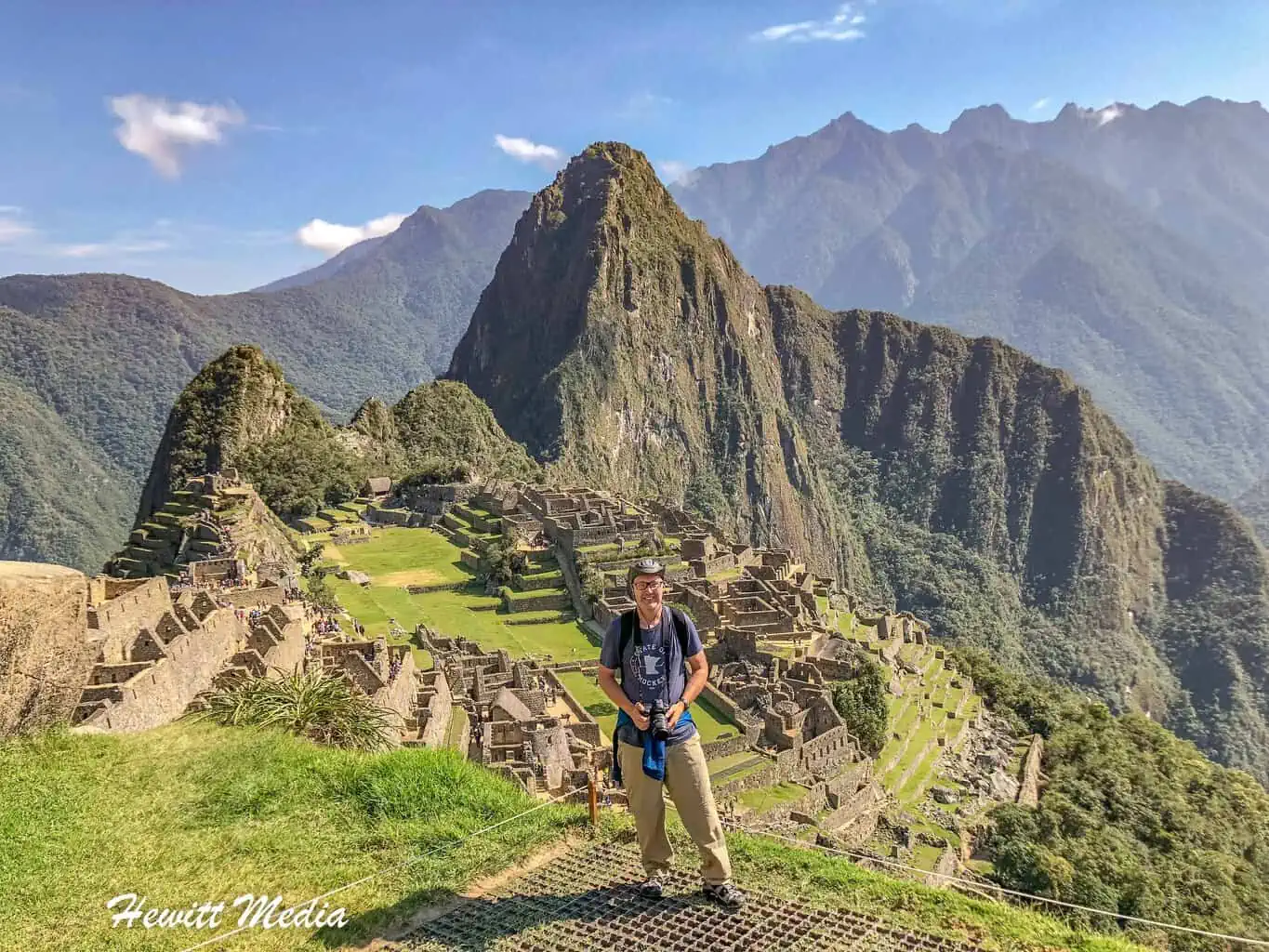
An All-You-Need Machu Picchu Packing Guide
In this Machu Picchu packing guide, I will outline all of the essential items you will need. This includes things like your passport, vaccinations, and clothing and equipment you’ll need. I also discuss some general principles that you should follow when packing.
To make things easier for you, I have also provided easy-to-download checklists. These Machu Pichu Packing checklists will make sure you’re prepared for your adventure. To navigate to the parts of this guide that are pertinent to you, please use the menu below.
Machu Picchu and Inca Trail Packing Guide Navigation Menu
Machu Picchu Travel Vaccinations
Important Note: I am not a medical doctor and do not have any medical experience. The information provided in this section is a summary of information that I got from the recommendations of the Centers for Disease Control and Prevention in the United States for travel to Peru. I am providing you this information to help bring awareness of the necessary vaccinations to you. However, consultation with my guide should not replace a discussion about your travels with your doctor or a travel medical clinic.
Before you leave for your trip to Peru, you need to make sure you have all of the proper vaccinations. Not only to protect yourself but to protect others. You may have questions on what vaccinations you need and what to look out for when you get them. In this case, I have included some general guidelines from my experiences below.
Travel Vaccination Advice
- Most specialized travel clinics will not accept insurance so you will have to pay for your travel consultation and immunizations and then request reimbursement from your insurance company later.
- Some immunizations aren’t accepted by every insurance company, so check with your insurance provider before getting your immunizations.
- Check with your regular doctor first, as often they can do a travel consultation for you and write you the necessary prescriptions for your immunizations, even if they aren’t able to give them to you. This way you can ensure that at least your travel consultant will be covered by your insurance up-front.
- Check with Walgreens or other drug stores that give flu shots to see if they have any of the immunization shots that you require before going to a specialized clinic that doesn’t accept insurance to get them. Walgreens can give you many of the immunizations necessary for international travel, and they accept insurance up-front.
- The Centers for Disease Control (CDC) website can be a great resource for answering any travel immunization questions that you have.
Peru Vaccination Recommendations
You will need to consult with your doctor or a travel clinic on recommended vaccinations before you leave. I have compiled a list below of some of what you might expect your physician to recommend.
- Typhoid (either a shot, which is good for 2 years, or a live virus pill, which is good for 4 years).
- Yellow Fever (The Yellow Fever vaccination is not required to enter Peru. It is also not recommended if you are staying within the areas around Cusco and Machu Picchu. However, if you are also traveling within the regions of Amazonas, Loreto, Madre de Dios, San Martin, and Ucayali, Puno, Cusco, Junín, Pasco, and Huánuco it is recommended that you get the Yellow Fever vaccination. Please see the Centers for Disease Control (CDC) map of the areas where a Yellow Fever vaccination is recommended for more detail).
- Hepatitis A & B (if you haven’t had them).
- Tetanus (if you aren’t current).
- Dukoral (gives you 3-month protection against travel diarrhea).
- Flu Shot
- Acetazolamide – This prescription medication is used to treat the pressure buildup in your eyes from glaucoma but can also be very effective in treating the pressure buildup in your sinuses and head caused by increased altitude. It is a good way to prevent the notorious headaches caused by an adjustment to higher altitudes.
Machu Picchu Passport Requirements
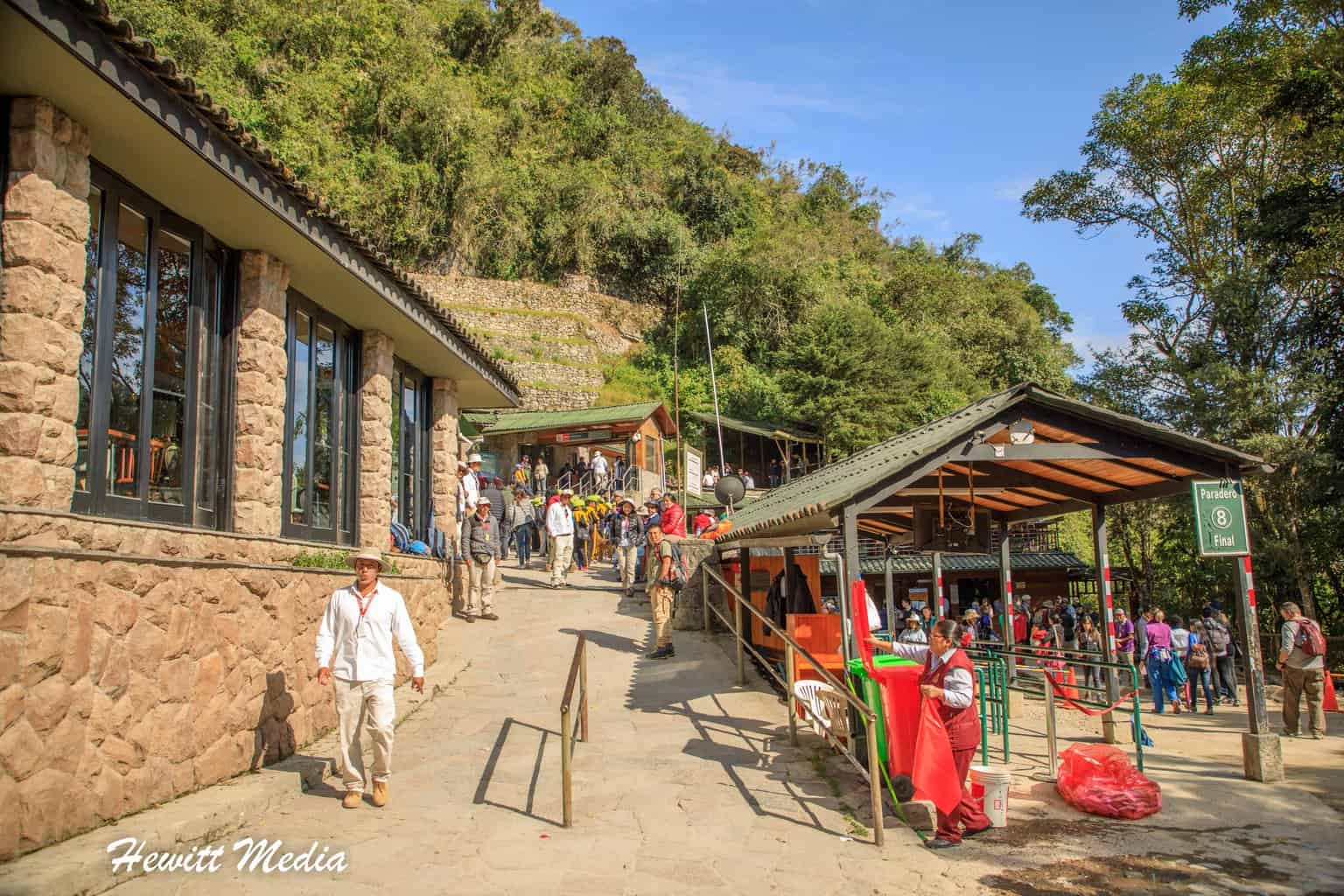
You will need to have your passport with you to get into Machu Picchu.
Make sure you have your passport with you when you visit Machu Picchu. If you are hiking the Inca Trail, you will need to store your passport in your backpack when you hike. I would recommend that you store your passport somewhere safe. Ideally, I recommend placing it in a dry bag or Ziplock bag to prevent it from getting wet.
Travel Insurance
Before you head to Peru, I would recommend that you purchase travel insurance. You will want to have this in case something happens, and you have to either postpone or cancel your trip. It would also be a great idea to purchase emergency medical evacuation insurance. Should an emergency occur, and you need to be medically evacuated from the country, that could cost you tens of thousands of dollars.
| READ MORE: |
 |
| Have a Back-up Plan for your Travel Plan |
General Machu Picchu Packing Guidelines
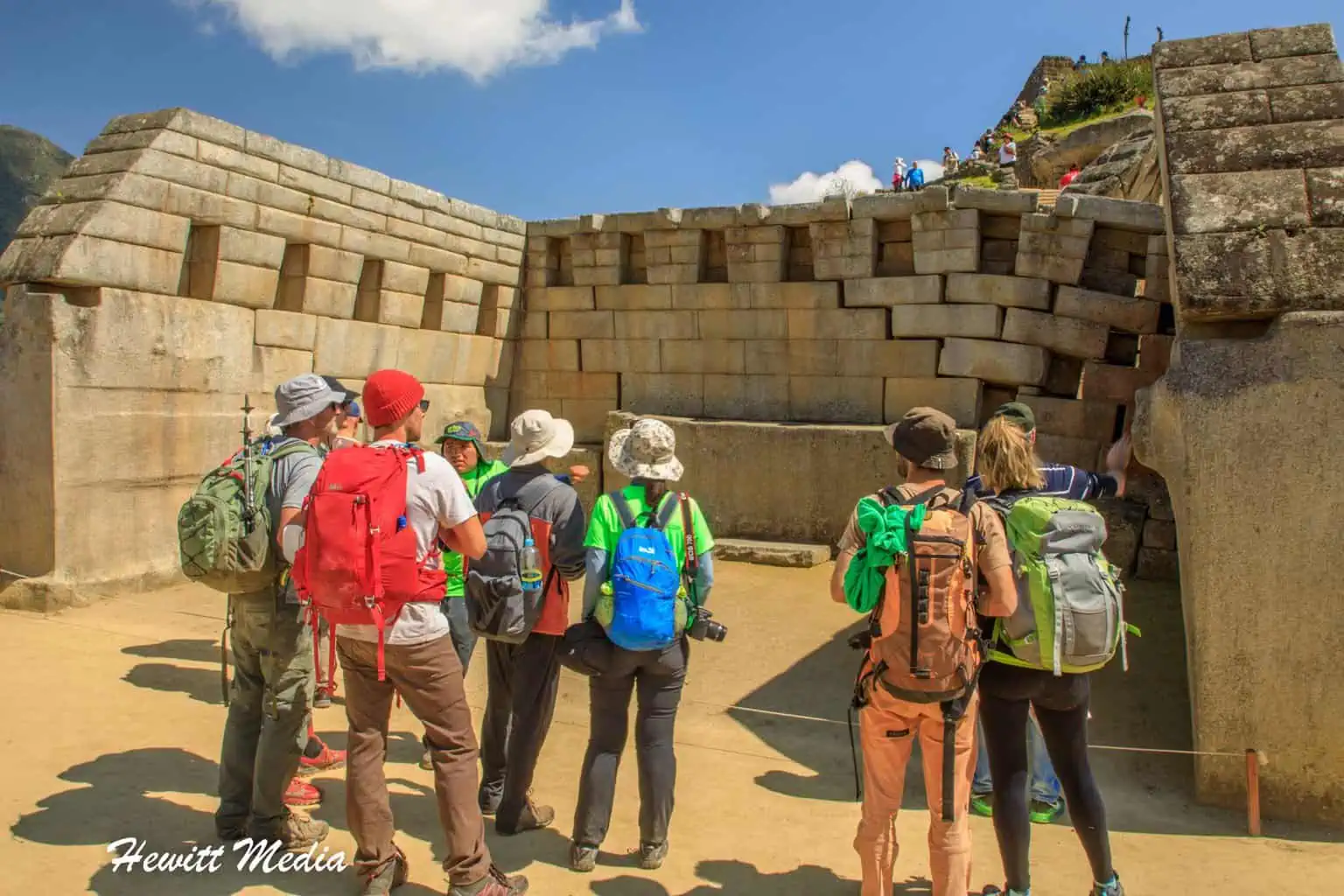
When packing for any trip, it is important to know what you might expect when you arrive. This is where we typically need to lean on other people’s experiences the most. As you start to pack for your trip to Peru, please use this guide to address your questions. The general Machu Picchu packing guidelines I have listed below will help you determine what to bring and not bring.
Prepare for the Elements
When most people think of Machu Picchu, I think they tend to think first of the high elevation. For that reason, I don’t think most people expect it to get as warm as it does. It can get quite warm at both Machu Picchu and on the Inca Trail.
The reality is, that although it can get chilly at night, it can be quite hot during the day in the summer. In the winter months, it is much cooler. In fact, it isn’t unheard of to see temperatures below freezing in the winter. I have included a chart on the average temperatures throughout the year for you to review below.
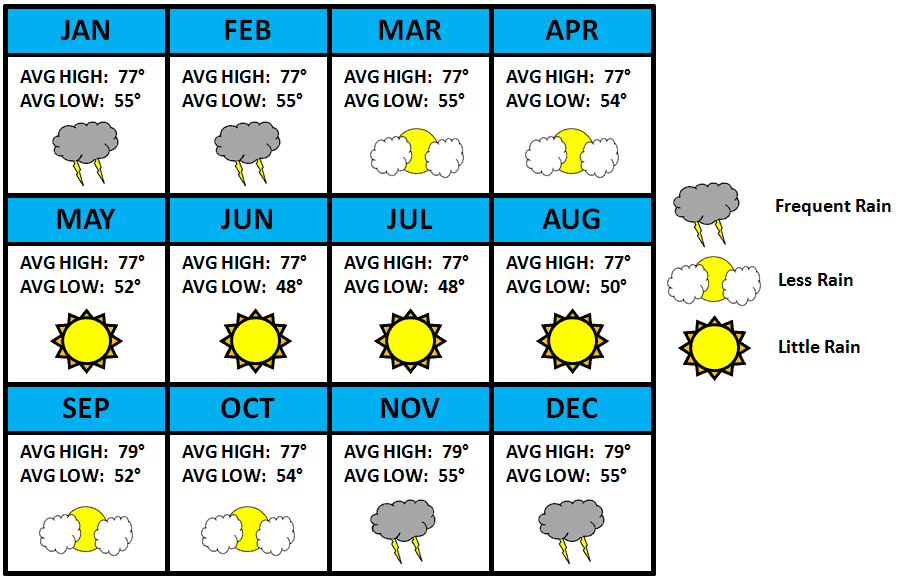
Pack Layers to Wear
Since there are great variations in the temperature throughout the day, it will be important to pack layers of clothes. You will also want to pack a base layer that wicks away moisture and dries quickly. This way, you won’t get cold at night after a long day of sweating. It would also be smart to pack a warm, but light jacket to wear. It can be cold at night, so a jacket to keep you warm when temperatures dip is essential.
Prepare for High Altitudes
You should be prepared for the high altitude when you visit. While Machu Picchu itself isn’t nearly as high, Cusco is at almost twice the altitude of Denver, Colorado. You need to drink a lot of water when you are at Machu Picchu or hiking the Inca Trail. You should drink at least two or three liters a day. This means you will need to be able to carry water with you.
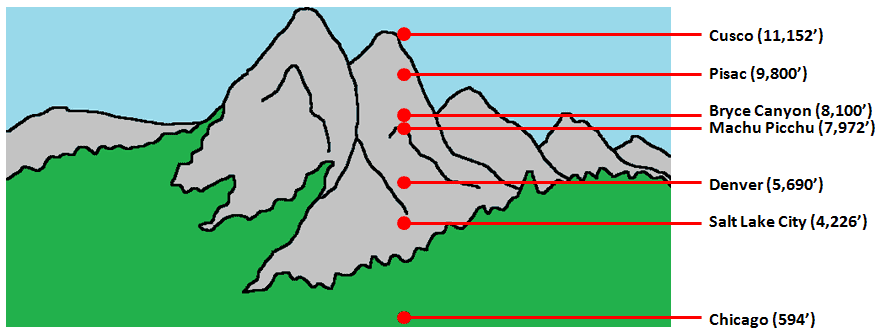
The Lighter the Better
You need to choose your gear wisely when you pack. Not only should it be comfortable, but it should also be lightweight. You also need to make sure your gear is fit for hiking and changing temperatures.
There will be a lot of walking, even if you aren’t hiking the Inca Trail. You do not want to carry a ton of weight on your back. You will need to climb stone steps and traverse paths throughout Machu Picchu. This can be difficult when you are tired because your gear is too heavy.
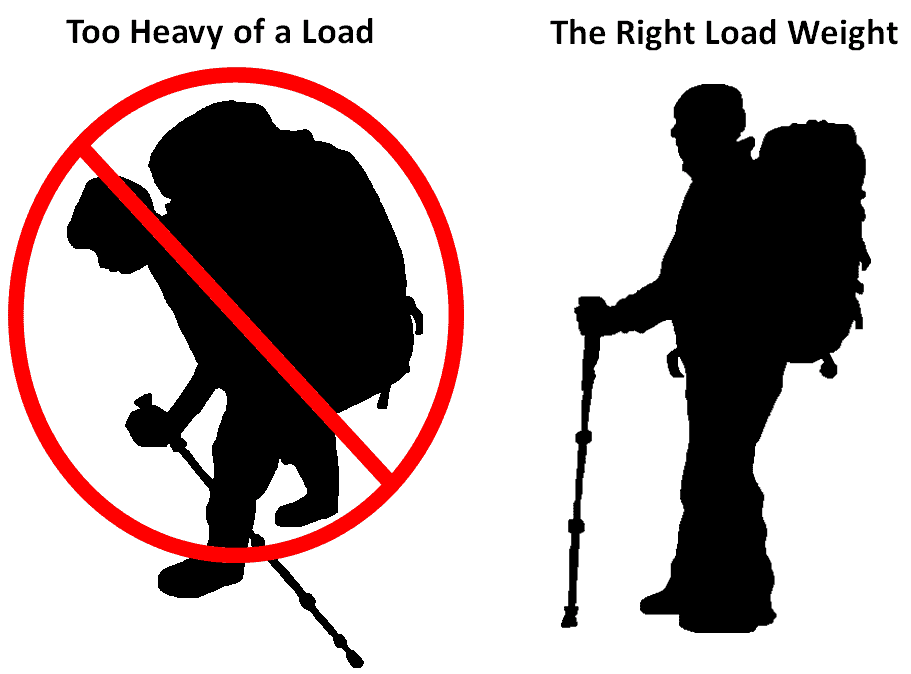
Don’t Forget Safety When Doing Your Machu Picchu Packing
It’s easy to forget when doing your Machu Picchu packing, but safety should be at the forefront of your mind. The last thing you want is to get seriously ill or injured when you are at Machu Picchu. Worse yet, when you are hiking the Inca Trail.
This can be avoided if you are safety conscious when you pack. Below are some safety concerns you should keep in mind when deciding what to pack for your trip.
- The Weather – As I said above, don’t dress too light or too heavy and leave yourself susceptible to the weather. Be prepared by packing layers.
- Bring Adequate Footwear – Take the recommendations I make below on footwear seriously. Even if you aren’t planning to hike the Inca Trail, you should wear proper footwear. This will keep you safe on the rock steps at Machu Picchu.
- Water, Water, Water – Be prepared to drink lots of water. Don’t just rely on being able to buy bottled water when you need it. Bring your own water bottle or hydration bladder.
- Don’t Wear Expensive Jewelry – I don’t want to make it sound like there is a big crime problem in Cusco, on the Inca Trail, or at Machu Picchu. That said, you should probably avoid wearing expensive jewelry that can either get lost or stolen.
Essential Gear for a Day Trip to Machu Picchu
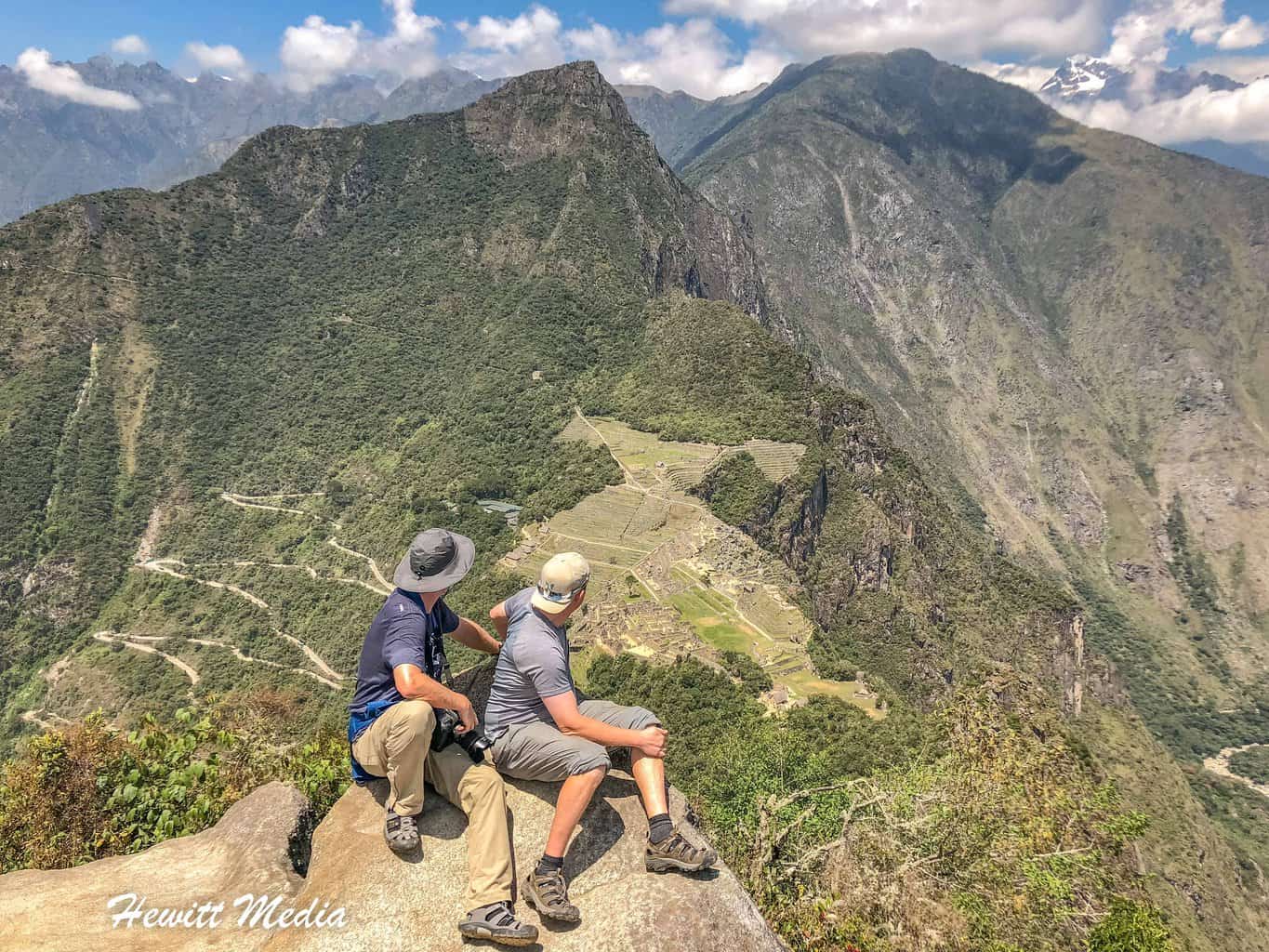
NOTE: This Machu Picchu packing guide contains references to products on my Amazon Store site. I may receive a commission when you purchase these products from my store, though at no additional cost to you. I hand-pick and recommend only the products that I am either familiar with or comfortable recommending.
If you are just visiting Machu Picchu for the day, then this Machu Picchu packing list is for you. I have included all of the necessary clothing and gear you should bring.
This includes the type of clothes, gear, and medications you will want to have. To make things easy for you, I have also included an easy-to-print Machu Picchu packing checklist. This is very handy when preparing your suitcase for your Machu Picchu adventure.
Day Trip to Machu Picchu Packing Checklist
As you start to pack, please feel free to print out the Machu Picchu packing checklist linked below. Hopefully, this helps you stay organized and makes sure you are prepared for your trip.
Hiking Boots
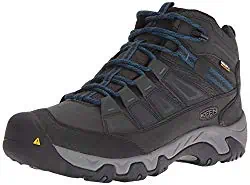 |
One of the most important pieces of gear you will want to pack for your trip to Machu Picchu will be a pair of high-quality hiking boots. Even if you don’t hike the Inca Trail, you will be doing a lot of walking on trails and stone steps and a good pair of hiking boots will help you maintain traction and not slip or stumble. This is especially true if you are planning to hike up Huayna Picchu during your visit. |
| View Recommendations on Amazon.com | |
Choosing the Right Hiking Boots
Choosing the right hiking boots is important because you are going to be spending a lot of time walking. Not to mention, much of that will be on rock steps and uneven trails. When looking for a good set of hiking boots for this trip, please keep the following characteristics in mind:
Look for the Following Characteristics in a Hiking Boot
- The boots should be lightweight. You don’t want heavy boots when you are doing as much walking as you will be at altitude. It is said that each pound of weight on your feet equates to roughly five pounds on your back. So, your boot weight really matters. Look for boots that weigh between 2.2lbs (1kg) to 3.3lbs (1.5kg). Anything more than that is too heavy.
- Look for boots that have a rubber sole with deep lugs. This will give you the best traction and ensure that you don’t slip on uneven rocks.
- Look for a mid-to-high height boot to give you good ankle support. You are going to be walking on some uneven surfaces. The last thing you want is to twist an ankle while on a trail. For added support, look for boots that have speed hooks or D Strings.
- Make sure the boots you purchase are waterproof. This isn’t as important if you aren’t hiking the Inca Trail. However, you will still want to have protection from water should the weather turn bad. Walking in wet boots can be miserable.
Hiking Pants
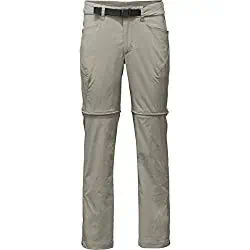 |
Because you will be doing a lot of walking at Machu Picchu, especially if you are going to be hiking up Huayna Picchu, you will want to have a pair of pants that keep you warm and are comfortable hiking in. I would strongly recommend that you not plan on wearing jeans, as jeans can be quite uncomfortable to walk in when they are wet. I always bring a pair of convertible pants with me because they give me the flexibility of wearing either pants or shorts depending on the weather. |
| View Recommendations on Amazon.com | |
Breathable T-Shirt
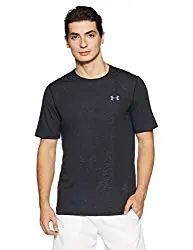 |
As I mentioned before, when you visit Machu Picchu, you are going to want to make sure that you dress in layers. This is important because the weather can vary, and it can change quickly. Remember, you are at a relatively high altitude. When you leave for Machu Picchu in the morning it may be cold, but by mid-day, the temperature can be pretty hot in the sun. I recommend wearing a breathable T-Shirt as your bottom layer because they wick moisture away from your body when you sweat. This will help you stay warm later after sweating doing all the walking you will be doing. |
| View Recommendations on Amazon.com | |
Fleece or Nano Puff Jacket
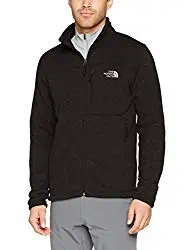 |
Having a warm, yet light, jacket to wear when you visit Machu Picchu is important because you never know when temperatures are going to turn cooler. This is especially true early in the morning when you start your trip to Machu Picchu from Cusco. It is not unheard of for temperatures early in the morning to reach right around freezing, so you are going to want to have a warm jacket to wear. In addition to being warm, you will also want to make sure that the jacket you bring is light. The last thing you will want to do when trekking around Machu Picchu is to have to carry a heavy jacket around with you. |
| View Recommendations on Amazon.com | |
Rain Poncho
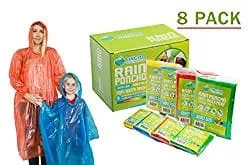 |
I would strongly advise that you have an emergency rain poncho with you when you visit Machu Picchu. The last thing that you will want to have to deal with is wet clothes when you are doing as much walking as you will be doing. If you have a rain jacket, that will work as well. However, the nice thing about disposable rain ponchos is that they are really lightweight and do not take up much room in your bag. This makes it much easier to pack with you and carry. |
| View Recommendations on Amazon.com | |
Water Bottle
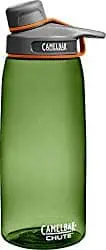 |
Because you are going to be at high altitude, you are going to want to make sure that you stay hydrated. If you don’t, you are bound to get a headache because of the altitude. They do not sell water inside the gates of Machu Picchu, but they do sell it right outside the gates. I would strongly recommend that you buy a bottle of water before entering. I would suggest carrying your own water bottle or water bladder inside your bag as most of the nice water bottles and bladders will keep your water nice and cold for a while. |
| View Recommendations on Amazon.com | |
50%-100% Deet Insect Repellent
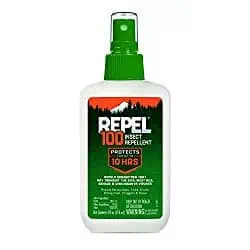 |
Believe me, if you do not bring insect repellent with you when you visit Machu Picchu, you will wish you did. This is especially true if you visit during the rainy summer season. If you are going to bring DEET insect repellent, I would recommend a repellent comprised of 50%-100% DEET. Anything over 50% won’t be more effective than 50% per the CDC, but it will last longer. Be aware, you should NOT use 50%+ DEET products on children under the age of 10. For more information, please refer to the CDC guidelines on using DEET insect repellent. |
| View Recommendations on Amazon.com | |
Sunscreen
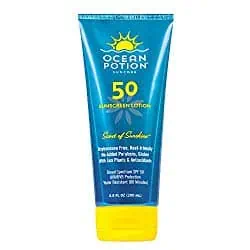 |
One thing people often don’t take into account when they visit Machu Picchu is how close to the Equator you are. It is common to forget about this when visiting Machu Picchu because people tend to assume the temperatures will be cooler because you are at a higher altitude. While it is true that temperatures are cooler, you are still exposed to the strong sun. For this reason, it is very important that you remember to bring sunscreen with you when you visit. I would recommend a sunscreen with at least an SPF of 50. |
| View Recommendations on Amazon.com | |
Sunglasses
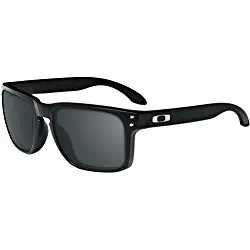 |
You are going to want to have sunglasses with you when you visit because it can get really bright on the trails and at Machu Picchu. There is very little shade in some places so you will be thankful to have a quality pair of sunglasses to protect your eyes. I would advise that you bring a pair of sunglasses that don’t come off your face easily, especially if you will be climbing Huayna Picchu. Some of the rock staircases are pretty steep and you don’t want to have to worry about your sunglasses falling off. |
| View Recommendations on Amazon.com | |
Altitude Sickness Pills
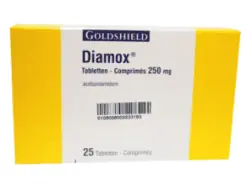 |
As I mentioned above, you are going to want to make sure you are prepared for the altitude when you visit Machu Picchu. If you aren’t prepared, you could find yourself having to deal with the symptoms of altitude sickness. One way that you can alleviate those symptoms is to talk to a doctor about getting altitude tablets. These tablets contain Acetazolamide, which is used to treat the eye pressure caused by glaucoma. This same substance has proven helpful in treating the pressure buildup from high altitude that can cause headaches as well. If you know you don’t do well at high altitude or aren’t sure because you haven’t been at high altitude before, I recommend speaking to your doctor about this prescription. |
| View Details on Webmd.com | |
Motion Sickness Pills
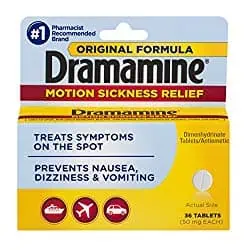 |
Motion sickness pills may not sound like something you would need when visiting Machu Picchu, and many people very well may not need them. However, if you get motion sickness easily, then you might want to consider bringing them. Unless you are planning on hiking the Inca Trail, you will likely be taking a long bus and train ride to get to Machu Picchu. The roads are windy and bumpy, and getting car sick isn’t unheard of. If this is a concern for you, then I would think about bringing some motion sickness medication with you. |
| View Recommendations on Amazon.com | |
Camera
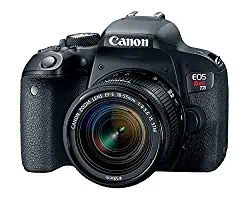 |
Machu Picchu is one of the modern wonders of the world, so you are going to want to have a camera with you to take pictures of it. If you have a DSLR, I suggest you bring it. I would also suggest you bring a wide-angle lens, a polarizing filter, and a lens hood as well. This will help ensure you get the best pictures of Machu Picchu possible. I have long been a Canon camera enthusiast, but there are other great brands as well (Nikon and Sony to name a few). I put together a list of cameras I have either used or read really great things about below. |
| View Recommendations on Amazon.com | |
Camera Backpack
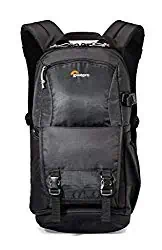 |
If you are going to bring your DSLR camera to Machu Picchu, you are going to want to have a camera bag to carry it in. This way you won’t have to worry about having your camera out as you travel on the buses and train. Not to mention, having a bag will come in handy for carrying other items like your sunscreen, bug spray, sunglasses, and other items. However, you should be aware that Machu Picchu has restrictions on the size of bags you can take into the site. Any bag larger than 40x35x20cm will not be permitted into the site and will have to be checked at the entrance. |
| My Recommendation: Lowepro Fastpack BP 150 AW II – A Travel-Ready Backpack | |
Essential Gear for Hikers of the Inca Trail
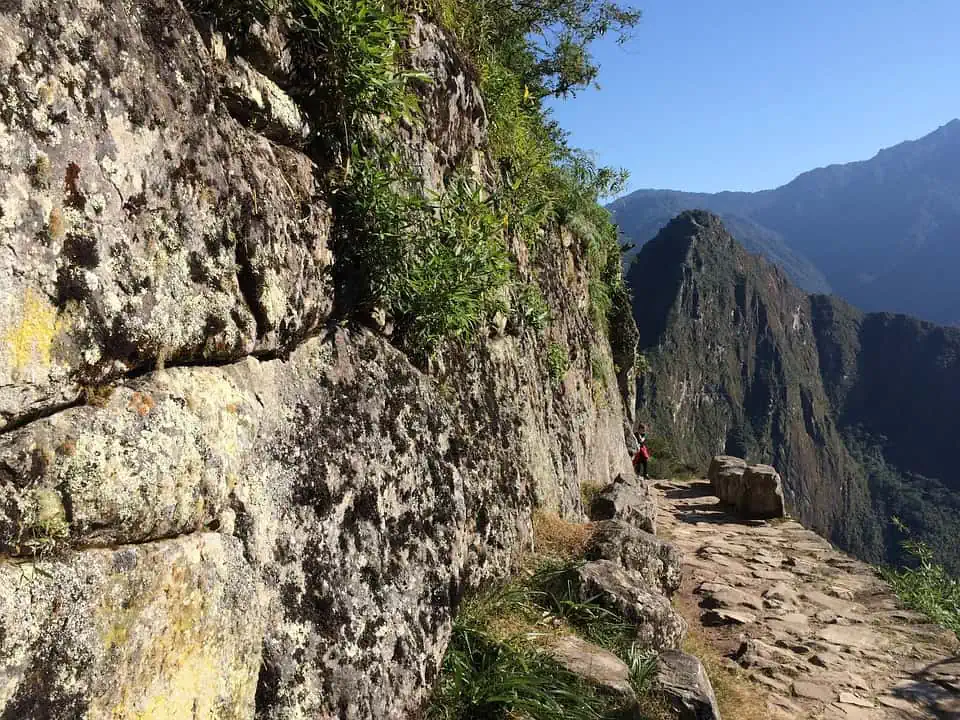
If you are planning on hiking the Inca Trail to Machu Picchu, this is the Inca Trail and Machu Picchu packing list for you. I have included all of the necessary gear that you will need in this section.
This includes the clothing, gear, and medications I recommend having with you. I have also included some valuable Inca Trail and Machu Picchu packing advice. To make things easy for you, I included an easy-to-print Inca Trail and Machu Picchu packing checklist. Hopefully, this helps as you prepare for your trip.
General Inca Trail Packing Guidelines
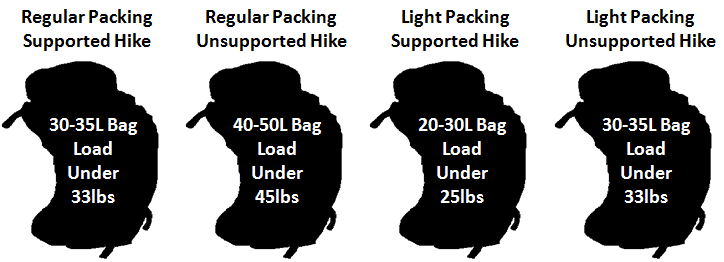
Before you start laying out your gear, be sure to read the general packing guidelines in my Inca Trail and Machu Picchu packing guide below. These guidelines are important to understand before you start the packing process. They outline how much weight you will want to carry and other important information. This will help you decide what to bring and what to leave behind.
Supported Hike
If you are doing a supported hike of the Inca Trail with a tour company that provides porters, you are going to want to make sure you bring no more than roughly 33 lbs (or 15kg) of gear. Keep in mind, you will be wearing between 6-10lbs (or 3-5kg) of this gear every day.
Unsupported Hike
If you are planning on hiking the Inca Trail with a tour company that does not provide porters, you are going to need to carry a heavier load. I would recommend that you still try and keep your load at under 45 lbs (or 20kg).
Pack Animals
Some tour companies provide pack animals such as mules or llamas to carry gear. If you are planning to use a tour company that has pack animals, those pack animals can typically carry an additional 10-15lbs (or 5-7kg) of your gear so you can pack a bit more. Or you cannot pack more and just choose to carry less on you.
Having a Porter
If your tour company does not provide porters, it is possible to hire a porter to assist you with carrying gear. Please be aware that Peruvian law does not allow porters to carry more than roughly 45 lbs (or 20kg) of weight, so make sure you plan accordingly and don’t expect or ask them to carry more.
Tip Your Porter and Staff Well
Porters work extremely hard. They are typically the first people up, the last people that go to bed, and do hard, grueling work. You will also need to account for tips for your tour guide and cooks. Also, if you need to take a bus to your starting spot or back to Cusco when finished, you should tip your bus driver(s). Below are some general guidelines on how much to tip:
| Porters: | 10-20 soles (US $5-7) Per Person, Per Day | |
| Tour Guide: | 20-60 soles (US $7-20) Per Person | |
| Cooks: | 10 soles (US $3.50) Per Person | |
| Bus Drivers: | 10 soles (US $3.50) Per Person |
Additional Advice
- If you are using a porter that you hire or your tour company provides, make sure you have them carry only the gear that you won’t need during your hike (sleeping bag, sleeping map, hiking sandals, etc…). The porters will typically hike out in front of you and arrive at your campsite early to set up, so you won’t be able to get things from them while you hike.
- If you are traveling to Peru with a suitcase, pack your empty backpack in your suitcase and then leave your non-hiking gear in your suitcase in your hotel room in Cusco while you hike to Machu Picchu.
- If you are traveling with just your backpack, pack an empty rucksack in your backpack that you can use to store your non-hiking gear in your hotel room in Cusco while you hike to Machu Picchu.
Inca Trail Hike and Machu Picchu Packing Checklist
As you start to pack, please feel free to print out the Inca Trail and Machu Picchu packing checklist below. This will help you stay organized and make sure you are prepared for your trip.
Hiking Boots (1 Pair)
 |
You are going to be doing a ton of hiking on the Inca Trail, so you are going to want to make sure you take really good care of your feet. One of the best ways you can do that is to invest in a pair of really good hiking boots. A good set of hiking boots will not only keep your feet comfortable, but they are vital to keeping you safe. You are going to be in some fairly remote areas when on the trail, so hiking in uncomfortable boots, getting bad blisters, or slipping and severely hurting yourself can be a big deal. If you are going to overspend on one item on your trip, this would be near the top of the list. |
| View Recommendations on Amazon.com | |
Choosing the Right Hiking Boots
Choosing the right hiking boots is important because you are going to be spending a lot of time hiking. Not to mention, much of that will be on rock steps and uneven trails. When looking for a good set of hiking boots for this trip, please keep the following characteristics in mind:
Look for the Following Characteristics in a Hiking Boot
- The boots should be lightweight. You don’t want heavy boots when you are doing as much walking as you will be at altitude. It is said that each pound of weight on your feet equates to roughly five pounds on your back. So, your boot weight really matters. Look for boots that weigh between 2.2lbs (1kg) to 3.3lbs (1.5kg). Anything more than that is too heavy.
- Look for boots that have a rubber sole with deep lugs. This will give you the best traction and ensure that you don’t slip on uneven rocks.
- Look for a mid-to-high height boot to give you good ankle support. You are going to be walking on some uneven surfaces. The last thing you want is to twist an ankle while on a trail. For added support, look for boots that have speed hooks or D Strings.
- Make sure the boots you purchase are waterproof. Hiking in wet boots can be a miserable experience. Without the right boots, keeping your feet dry can be very difficult.
Hiking Pants (2 Pairs)
 |
Because you will be doing a lot of hiking on the Inca Trail, you are going to want to make sure that you have the right pants to wear. Wearing the wrong pants can make hiking uncomfortable, especially when you get wet, and the last thing you will want is to be uncomfortable with many days of long hiking in front of you. The pants you choose should be lightweight, moisture wicking, and comfortable. I really like to bring pants that convert into shorts. This allows me to quickly change from wearing pants to shorts, or vice versa, without having to completely change my pants. I own convertible pants made by both North Face and Columbia but have tried on convertible (and otherwise) pants from of a variety of other brands and have a great set of recommendations for you below. |
| View Recommendations on Amazon.com | |
Breathable T-Shirts (1 Per Day)
 |
When you hike the number of miles that you are going to be hiking on the Inca Trail, you are going to build up a sweat. The last thing you want is to be left with a soaking wet shirt when you are finished hiking and be freezing cold because of it. That is why I strongly recommend that you bring with you a breathable dry fast shirt for each day you will be hiking. They will keep you cool when you are hiking in hot weather and then dry quickly so that you won’t freeze when you settle in for the night. There are some great brands you can buy that I have tried out including Under Armour, Columbia, North Face, and Patagonia. I have included some recommendations you can find on Amazon.com below if you would like some ideas. |
| View Recommendations on Amazon.com | |
Base Layer (Especially Top)
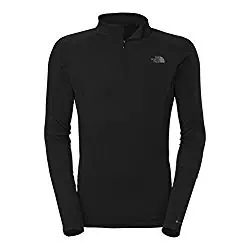 |
A good base layer is critically important to keep you warm when the temperature starts to fall. A good base layer will wick away moisture and dry quickly for a light base layer or keep you warm even when wet for a heavy base layer. The type of base layer you choose to bring will depend greatly upon how warm a jacket you decide to bring and how easily you get cold. If you bring a down Nano Puff jacket or don’t get cold too easily, then you can probably get by with a light base layer. However, if you only bring a light fleece and\or you get cold easily, then a heavier base layer might be your best bet. If you are interested, I have included a number of base layers that I recommend for you to review. |
| View Recommendations on Amazon.com | |
Fleece or Nano Puff Down Jacket (One Jacket)
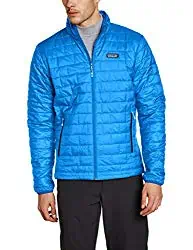 |
The temperatures are usually fairly warm during the day, even at this high of an altitude, but the temperatures can dip to around freezing at night. This is especially true during the winter months and the shoulder seasons. For this reason, it will be important to have a warm, yet lightweight jacket that you can throw on in the evenings when the temperatures get fairly chilly. Either a lightweight, warm fleece or a lightweight down jacket would be ideal. I really like Patagonia’s Nano Puff jackets because they are really warm, really light, and zip up into their own pocket to make carrying them a breeze. I have listed some additional recommendations on Amazon below if you are interested in getting a new jacket for your trip. |
| View Recommendations on Amazon.com | |
Windbreaker Jacket (One Jacket)
 |
In the event of strong winds or even worse rain, you will want to have a good windbreaker that is waterproof to protect you from the elements. Like your warm jacket, the windbreaker should be fairly lightweight as you don’t want to make your load too heavy to carry. You may not use your windbreaker jacket a ton, but when you really need it you will be really glad to have it. I have used windbreakers from Patagonia, North Face, and Columbia in the past, and have really loved their jackets. My favorite is Patagonia’s Torrent Shell jacket, which I use all the time. I have included some other jackets that I really like that are available on Amazon.com for you to browse thru below. |
| View Recommendations on Amazon.com | |
Hat and Gloves (1 Hat and 1 Pair Gloves)
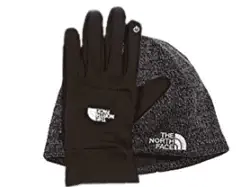 |
You are going to want to make sure you have a pair of thin gloves that you can handle your hiking poles with, as well as a warm hat when you are making the hike. You will want to be making some miles in the morning when the temperatures can still be quite cold. Having a warm hat and some gloves will go a long way in keeping you warm. If you are looking for some suggestions on what type of gloves or hat to bring, I have included some of my recommendations below. |
| View Recommendations on Amazon.com | |
Under Wear (One Per Day and Two Sports Bras for Women)
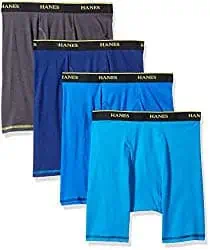 |
Having the right underwear when you go on this hike can be the difference between comfort and miserableness. For that reason, I would suggest that you think carefully about what type of underwear you pack. I would recommend something designed for sports or workout use. There are some really great products out there that are designed to wick moisture and keep you cool. Obviously, you are going to want to bring a pair for each day of your trip, so the underwear should be lightweight as well. For the ladies, I have been told to recommend bringing at least a few sports bras with you as well. |
| View Recommendations on Amazon.com | |
Hiking Socks (Pair for Each Day)
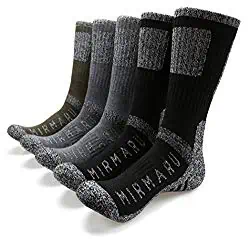 |
Taking care of your feet is extremely important when you are taking long hikes, and the first layer of defense is the socks that you wear. You are going to want to have socks that are designed for hiking, as these socks are designed to keep your feet warm, even when they are wet. You are going to want to avoid bringing cotton socks, as these will do the opposite of keeping your feet warm when they are sweaty or wet. I would suggest bringing a pair of quality hiking socks for each day of your hike. If you are interested in some good recommendations, I have included some below. |
| View Recommendations on Amazon.com | |
Safari Hat (Optional)
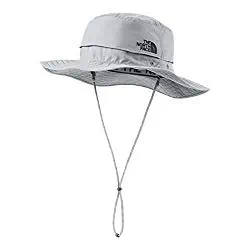 |
This item is more on the optional side, but it is something I brought, and I was really glad that I did. I think people tend to forget that you are so close to the Equator when making this trip, so it is easy to underestimate how strong the sun will be. Having a wide brim hat that can protect your face and neck from the sun can be a really great thing to have. If you are interested in checking out some wide brim safari hats, I have included some recommendations below. |
| View Recommendations on Amazon.com | |
Hiking Gaiters (Optional)
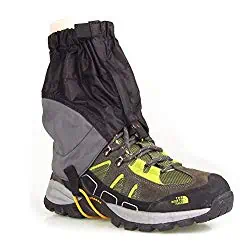 |
This item is completely up to your personal preference. If you have hiking boots that go up above your ankle, a set of gaiters may be unnecessary. However, if you do have shorter hiking boots, a set of gaiters could help protect you from getting water and moisture into your boots. Personally, I like wearing them when I go on long hikes because it gives me that added layer of protection from water, mud, and other debris getting into my boots and making me uncomfortable when I hike. If you are interested in looking at a pair, I listed a pair I recommend below. |
| My Recommendation: WINOMO Adjustable Outdoor Waterproof Ankle Walking Gaiters Hiking | |
Hiking Backpack (1 Backpack)
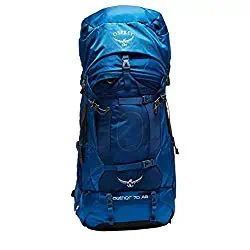 |
Choosing the right backpack to bring on your trek of the Inca Trail is critically important because it will be used to carry all of the gear that you will need. Not only is it important to pick the right size bag to fit your gear, but the design and quality of the bag will be important as well. If you don’t bring a bag that is properly weather resistant and comfortable, it can make your hike a miserable experience. You will essentially be living out of this bag, so if it becomes a burden to carry or the gear inside of the bag gets wet, then you are immediately at a disadvantage. Below I have provided some general guidelines for choosing the right back, as well as some of my recommendations. I love Osprey’s backpacks as they are really well designed and durable. |
| View Recommendations on Amazon.com | |
Choosing the Right Hiking Backpack
Choosing the right backpack to take on your trip is a very important decision. You’ll use this to carry what you aren’t wearing and isn’t being carried by a porter or pack animal. Having a bag that can fit what you need and is comfortable and durable is important. Here are some general guidelines for what you should look for in a backpack to bring.
Bag Size
- For the typical hiker, a 30-35L bag should be sufficient. This should be big enough to fit around 22lbs (or 10kg) of gear. Remember, you will typically be wearing around 6-10lbs of gear each day as well.
- If you pack really light and use a porter or pack animal to carry some of your gear, then you might be able to get away with using a 20L bag. However, I would recommend bringing at least a 30L bag just in case.
- If you are traveling without a porter and don’t pack light, then you might want to consider a 40-50L bag. Just make sure you don’t exceed 45 lbs (or 20kg of weight) as you might struggle with a load that is heavier on the trail.
Backpack Design
- You should pay close attention when purchasing a hiking backpack. The bag will need to be both durable and weather-resistant. Pay attention to the material the bags are made out of. You should also see whether they have a weather-resistant coating. Another useful feature some bags come with is a rain cover.
- Your bag should be comfortable to wear. Good bags will be adjustable with ample padding on the shoulder straps and waist belt. In addition, they will also include a well-designed suspension system that evenly distributes the weight of the bag among the muscles used to carry the load. I would suggest trying on various bags at REI or another outdoor gear retailer before purchasing your bag.
- For ladies, I would suggest looking at a backpack specially designed for women. Most well-designed women’s bags also have reshaped waist belts designed for women’s bodies. This can be important because the waist belt is critical for transferring weight off your back.
Backpacking Sleeping Bag (1 Bag)
 |
Finding the right sleeping bag to bring with you on your trek on the Inca Trail is an important decision. It can get to around freezing or below at night on the trail so you will want to have a sleeping bag that is warm enough to keep you comfortable. However, you will also want to bring a sleeping bag that is fairly lightweight because it will have to be carried (either by yourself, a porter, or a pack animal) on the trail. To give you some ideas on what to look for in a sleeping bag to bring, I have included some general guidelines and some bags that I recommend below. |
| View Recommendations on Amazon.com | |
Choosing the Right Sleeping Bag
Choosing the right sleeping bag to take with you on your trek can mean the difference between being comfortable and being freezing cold at night. When choosing the right sleeping back to bring, please refer to my general guidelines below.
Temperature Rating
- Pay close attention to the temperature rating. These are typically measured in degrees for the following measurements for high-quality bags:
| Upper-Limit: | Max temp one can sleep at with zipper open and arms outside | |
| Comfort: | Temp one can sleep comfortably and relaxed at | |
| Lower-Limit: | Temp one can sleep continuously for 8 hours at | |
| Extreme: | Minimum temp one can sleep safely for 6 hours at |
- For sleeping bags that have seasonal ratings instead of temperature ratings, summer ratings typically mean they are good at 32°F (or 0°C), winter ratings typically mean 10°F (or -12°C) or below, and three season ratings typically mean the bags are good between 10°-32°F (or between -12°-0°C).
- Recommendation: Temperatures on the Inca Trail can dip down below freezing at night. So, I would make sure you have a bag that is rated with a lower limit of at least 10°F (or -12°C). That, or at least a 3-season bag if only a seasonal rating is provided.
- Recommendation: Make sure the bag has been through EN Standards Testing (marked with EN13537). This means it has undergone Thermal Manikin Testing.
Down vs Synthetic
- Down-filled sleeping bags typically have a higher insulation rating, pack tighter, and are lighter. However, they are typically more expensive, and their effectiveness at insulating drops significantly when they get wet because the down tends to clump together.
- Sleeping bags filled with synthetic insulation are typically less efficient at insulating, don’t pack as tight, and are typically heavier. However, these bags are typically cheaper and don’t lose their effectiveness at insulating as easily when they get wet because they tend to dry faster.
- Recommendation: If you want or think you will need a down sleeping bag, make sure you look for one that has had Durable Water Repellant (DWR) applied and invest in a water-tight bag for the sleeping bag. The DWR won’t make the sleeping bag waterproof, but it will make it more resistant to clumping and better able to withstand moisture.
Mummy vs Quilt Bag
- Mummy bags are typically warmer because their cocoon shape is typically more effective at holding body heat in. However, mummy bags are also more restrictive in regards to the sleeping positions that they allow because they are typically more tightly fitting.
- Quilt bags offer a lot more freedom of movement because of their rectangular shape, but this shape also makes them less effective in holding in body heat.
- Recommendation: You won’t experience arctic temperatures on the Inca Trail, but it can get very cold at night. Unless you are bothered by the restriction in movement, I would recommend a mummy bag.
Other Considerations
- I would recommend looking at zipperless bags, as zippers tend to wear out and also add more weight to the bag.
- If you are more susceptible to cold or are planning on using the bag in even colder environments in the future, I would recommend looking for a bag with a draft collar. A draft collar is an insulated collar around the hood of the sleeping bag that helps protect you from the cold.
- If you use a sleeping pad, having a sleeping bag with pad loops can be a really big help. These loops are used to secure your bag to your pad so that you don’t shift off of your sleeping pad while sleeping.
Sleeping Pad (Optional)
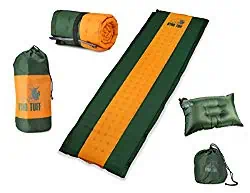 |
Sleeping mats are typically provided by your tour operator if you are planning on going on a supported hike. However, if you are planning on doing the hike solo or would like to ensure that you have a sleeping mat that meets your comfort needs, you may want to consider bringing your own. If you do decide to bring a mat, I would recommend that you bring a mat that is lightweight and comfortable. You aren’t going to want to have to lug a heavy or cumbersome mat around with you. I would also suggest that you look at the self-inflating mats as well as those mats are really convenient and easy to set up. |
| View Recommendations on Amazon.com | |
Travel Pillow (Optional)
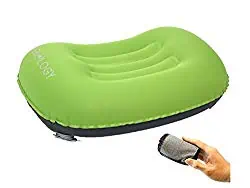 |
Another optional item that you can choose to bring with you on your hike of the Inca Trail to Machu Picchu is a travel pillow. These small pillows can really make a night’s sleep more restful after a long day of hiking. I would suggest you bring a travel pillow that is either inflatable or one that packs up into a small carrying case so that you can save space in your bag. If you are looking for some good recommendations, I have provided a number of travel pillows available on Amazon.com that I recommend below. |
| View Recommendations on Amazon.com | |
Sunglasses
 |
You are going to want to have sunglasses with you when you hike the Inca Trail because it can get really bright on the trail and at Machu Picchu. There is very little shade in some places so you will be thankful to have a quality pair of sunglasses to protect your eyes. I would advise that you bring a pair of sunglasses that don’t come off your face easily because the last thing you want to have to worry about when on the trail is losing your glasses or other gear. Some of the rock staircases are pretty steep and you don’t want to have to worry about your sunglasses falling off. |
| View Recommendations on Amazon.com | |
Water Bottle or Hydration Bladder
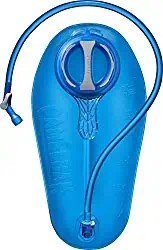 |
When you are hiking on the Inca Trail, it is critically important that you stay hydrated. It is important to stay hydrated whenever you are taking a long hike, but this is especially true when you are hiking long distances at high elevation. I would recommend that you read the general guidelines that I have included below for staying hydrated and make sure you have the necessary equipment to carry enough water with you when you hike. If you are looking for a water bottle or water bladder, I have provided some recommendations for you below. |
| View Recommendations on Amazon.com | |
Planning Your Water Needs Appropriately
Staying hydrated when hiking at high elevations is critically important. Planning your water needs correctly is the most important tip I will give you in this Inca Trail and Machu Picchu packing guide. To assist you in planning your water needs for the hike on the Inca Trail, I have included some general guidelines below.
Water Planning Recommendations
- Make sure you drink at least 2-3 liters of water each day as it is critically important that you stay hydrated when hiking at high altitudes.
- If you are hiking the Inca Trail with support, the crew should provide you with water. I would recommend double-checking to ensure that they boil and sanitize the water before giving it to you. You may want to consider bringing your own water purification tablets just in case.
- If you prefer to bring water bottles, you will need to be able to carry either two 1-liter bottles or one 1.5-liter bottle and make sure that you drink at least 1 liter of water before starting each day.
- If you prefer to carry a hydration bladder in your backpack, there are some good 2–5-liter bladders available on Amazon.com that I recommend above.
- If you are hiking the Inca Trail unsupported, it will be critical that you bring water purification tablets with you. Make sure you bring more than you think you will need.
Headlamp or Flashlight
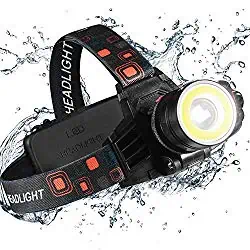 |
When it gets dark at night, you are going to need something to assist you in getting around the campsite. I recommend that you invest in bringing a travel headlamp or travel flashlight with you on the trail. A travel headlamp is ideal because you don’t need to hold it, but a small flashlight will do as well. There are some really slick waterproof headlamps on the market, and I have a few of those on my recommended list below. Whichever option you choose to go with, I would make sure that it is lightweight so that you aren’t adding too much weight to your pack. |
| View Recommendations on Amazon.com | |
Camera Gear
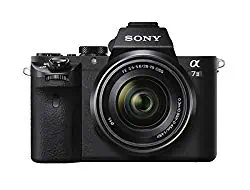 |
On top of being one of the premier hikes in this world, the Inca Trail also cuts thru some absolutely stunning scenery. For this reason, you will want to make sure you have a camera with you if you hike the trail. If you are interested in taking high-resolution photos, you can bring your DSLR. However, I would ultimately recommend a mirrorless camera if you were in the market for a camera for this trip. A mirrorless camera will give you the quality of a DSLR, but they are much lighter to carry. Some mirrorless cameras that I recommend include Sony’s Alpha A7 III, Nikon’s Z7, Fujifilm’s X-T3, and Panasonic’s Lumix G9. I have included these cameras in my recommendations on Amazon.com, which can be found below. |
| View Recommendations on Amazon.com | |
50%-100% Deet Insect Repellent
 |
Believe me, if you do not bring insect repellent with you when you hike the Inca Trail and visit Machu Picchu, you will wish you did. This is especially true if you visit during the rainy summer season. If you are going to bring DEET insect repellent, I would recommend a repellent comprised of 50%-100% DEET. Anything over 50% won’t be more effective than 50% per the CDC, but it will last longer. Be aware, you should NOT use 50%+ DEET products on children under the age of 10. For more information, please refer to the CDC guidelines on using DEET insect repellent. |
| View Recommendations on Amazon.com | |
Sun Screen
 |
One thing people often don’t take into account when they hike the Inca Trail and visit Machu Picchu is how close to the Equator you are. It is common to forget about this because people tend to assume the temperatures will be cooler because you are at a higher altitude. While it is true that temperatures are cooler, you are still exposed to the strong sun. For this reason, it is very important that you remember to bring sunscreen with you when you hike the trail. I would recommend a sunscreen with at least an SPF of 50. |
| View Recommendations on Amazon.com | |
Altitude Sickness Pills
 |
As I mentioned above, you are going to want to make sure you are prepared for the altitude when you hike the Inca Trail and visit Machu Picchu. If you aren’t prepared, you could find yourself having to deal with the symptoms of altitude sickness. One way that you can alleviate those symptoms is to talk to a doctor about getting altitude tablets. These tablets contain Acetazolamide, which is used to treat the eye pressure caused by glaucoma. This same substance has proven helpful in treating the pressure buildup from high altitude that can cause headaches as well. If you know you don’t do well at high altitude or aren’t sure because you haven’t been at high altitude before, I would recommend speaking to your doctor about this prescription. |
| View Details on Webmd.com | |
Motion Sickness Pills
 |
Motion sickness pills may not sound like something you would need when hiking the Inca Trail, and many people very well may not need them. However, if you get motion sickness easily, then you might want to consider bringing them. You are likely going to need to take transportation from your hotel in Cusco to the start of the trail, and then back to your hotel when you are finished. The roads in the area can be rough and the rides can be bumpy. It is not uncommon for people to get motion sickness when riding in the back of a van or a bus. If you get motion sickness easily, you might want to consider bringing a small bottle of motion sickness pills. |
| View Recommendations on Amazon.com | |
Additional Items
In addition to the items recommended in my Inca Trail and Machu Picchu packing guide above, here are some additional pieces of equipment, medication, and medical supplies that you might want to consider bringing with you.
- Hang-up Toiletry Bag
- Portable Charger
- Dry Bag or Zip Lock Bags
- Travel First Aid Kit
- Blister Pads or Mole Skin
- Tylenol or Ibuprofen
- One Roll of Toilet Paper (per person)
- Antidiarrheal
- Ear Plugs
- Wet Wipes
- Pee Bottle (For Women)
Don’t Forget to Subscribe to My Adventures!

Let Me Help You Save On Your Next Adventure!
‘Start Exploring Today’ Merchandise Available Now!








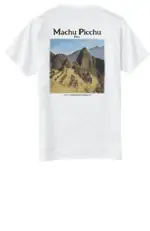
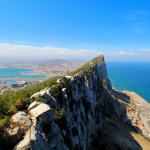
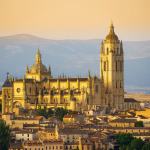


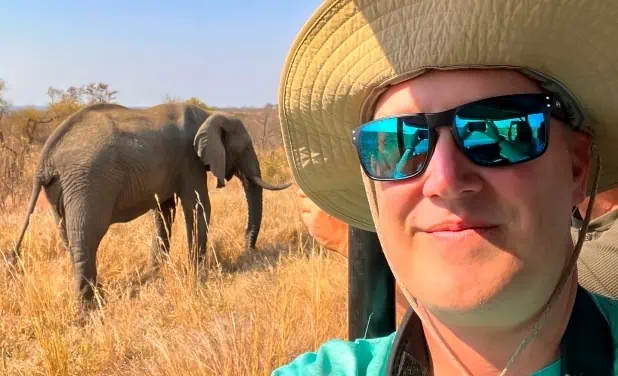
Wow!! Thanks for the well thought out and thorough guide and lists. 👍👍
Thank you for the kind words! You are very welcome! 😀👍
🙂